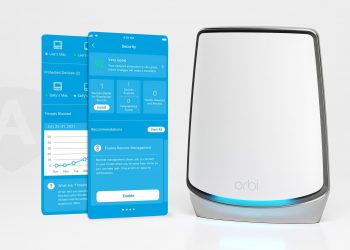While the Internet of Things opens up countless possibilities for our society and civilization to move forward into the future, one thing is certain: with these open possibilities also comes a heightened amount of risk for the devices connected to the IoT systems. This is because devices connected to IoT systems are essentially data collectors; every bit of data from usernames and passwords, locations, identification numbers, and more, pass through these devices on a regular basis. Any breach in the security of any of these devices can result in crimes ranging from identity theft to corporate data theft happening.
But securing a device connected to the IoT is not as simple as installing a security app and calling it a day. There are a number of hurdles that can prevent end-to-end security between devices in an IoT system from happening. Not only because, despite the IoT wave having started years ago, it is still a technological wave in its infancy. Added to that is the fact that most if not all of the major players pushing smart devices and products out prioritize developing and selling quickly, which oftentimes leads to security systems taking a back seat.
Not only that, most devices’ resources are already stretched to their limit from the moment they are rolled out, not to mention when they are actually used on a regular basis. This doesn’t leave much room, if any, for advanced security features to be installed and to actually run. A good example of this is to think of a fridge in the sensor that monitors the temperature in each compartment and makes minute adjustments per cycle. A sensor like that won’t have resources for encryption for security. Oftentimes manufacturers give the excuse that adding resources and in turn security measures can increase the price of the product and can cause functionality issues.
There are many more to list, but then what can be done to have some semblance of security in an IoT environment?
Here are some basic tips, beyond the typical “install security software, use strong passwords” that we should all know by now, that most people would be surprised to know aren’t being followed by a lot of owners of devices connected to IoT systems.
- Take time to research the devices you’re looking to buy. This is very important especially if the device you are looking to purchase will be used to process lots of important personal data, like a tablet to control the home or do some online shopping. Know if the policies are in place for what happens in the event of a data breach, if data will be shared to third parties, and so on.
- Read the privacy policy of apps you are looking to install on your devices. By law, apps are required to indicate what they will do with data and information gathered by their app, if any. Take the time to scroll down and read instead of just tapping “I Agree.”
- If a device or data is asking for access to data and other features that you feel are unnecessary for the app or device to function, deny the permission to do so.
- And lastly, using a VPN can vastly increase the amount of protection your transmitted data will have. Not only that, it gives you other features such as the ability to hide your geolocation or even select a specific one for your needs.
Cybercrime is an ever-present threat and IoT systems can compound this problem tremendously, so taking steps to ensure the security of devices connected to an IoT system can help prevent problems in the future.

for developers and enthusiasts







